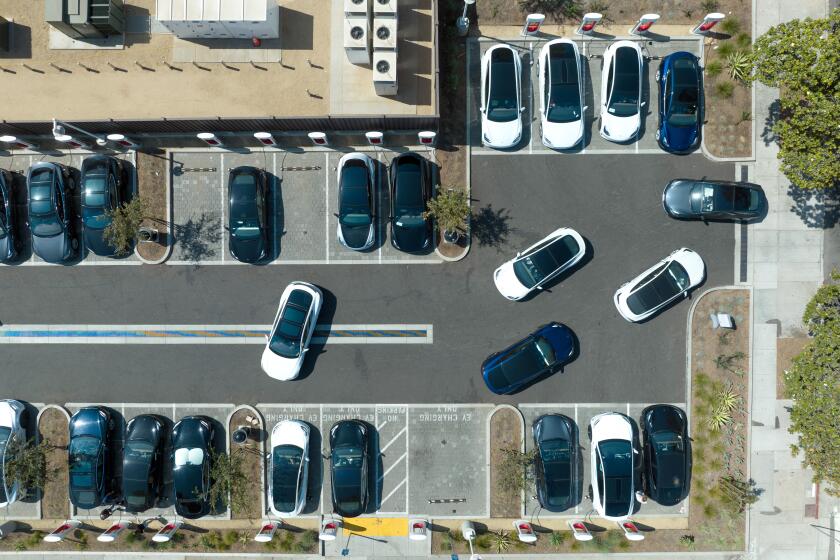Exterior Finish Fails on Some New Cars
- Share via
Question: My wife’s 1984 Buick Regal T-Type has developed a serious exterior paint problem, which I have heard described as “crazing.” The car has been well cared for, washed weekly and given a wax every 60 days. The Buick dealer and factory representative are giving us the runaround. I would like to know more about the crazing phenomenon and whether this is a known problem. Can you help?--B.K.
Answer: Let no one convince you otherwise; crazing is definitely a problem in many modern paint jobs, both on domestic and imported cars. In many instances, it will ruin a car’s finish after less than four years, resulting in very costly repairs.
Most of the cases of crazing result from a breakdown in the clear-coat finish that is used on the preponderance of new cars. These clear coats are part of what is called two-stage paint, which consists of a primer coat, a single-color coat and a clear finish.
The hoopla about these two-stage paint jobs suggests that they are better because the clear coat adds luster and depth to a paint job. In fact, they are cheaper, lighter in weight and allow manufacturers to comply more easily with environmental regulations covering paint solvent emissions at the factory.
It is a sad fact that these paint jobs can be expected to last only four years on many new cars. After that, they are bound to lose their looks and begin a fast degradation.
In crazing, the color coat begins to crack as a result of ultraviolet light and atmospheric pollution, such as acid rain and various hydrocarbons. One particular frustration is that it can occur despite the most scrupulous care, including regular washing and waxing.
Car manufacturers like the clear coat because it allows them to put on a single color coat of paint, often with just two passes of a spray gun across the car’s surface. In some cases, the process allows them to apply 25% less paint. It saves money in the paint and a few pounds of weight, not an inconsequential amount when it comes to fleet fuel economy ratings.
You should have your car inspected by a top-notch professional auto body shop. Some paint shops attempt to paint over a crazed surface, using specially marketed products that are supposed to seal the surface. Among some professionals, however, the only solution to a crazed condition is to strip the car and apply new primer and paint.
Q: The engine on my Toyota Corolla recently blew a head gasket. The mechanic at the dealership said I would have to replace the entire cylinder head. He said the aluminum was pitted around the areas of the coolant holes and that the pitting extended about one-third of the way to the cylinder area. He claimed that a new gasket would blow out if I didn’t get a new head. Is he right?--T.M.
A: A cylinder head gasket is one of the most important pressure seals inside your engine. It must withstand tremendous pressures and temperatures. If one-third of the supporting surface was lost, it would certainly weaken the gasket. That’s probably why it blew out.
But it is possible to machine the cylinder head, a procedure in which about .006 of an inch of metal is stripped off the cylinder head.
This should eliminate a substantial amount of the pitting. If it does, you could save a substantial amount of money by reusing the cylinder head.
The amount of metal you can remove is only .006 inches, because removing any more than that would alter the engine compression and result in higher exhaust emissions than is permissible under the law. It would also create too much slack in the camshaft timing chain.





